By Dr. Shlomo Kandelshine
Established by Nazi Germany during World War II, the Auschwitz extermination camp near the city of Auschwitz, in western Galicia, southern Poland, was the largest extermination camp in human history.
About one million two hundred people were murdered in the camp, of whom around one million one hundred were Jews. Auschwitz operated on a larger scale than any other extermination camp during the war, from June 1940 to January 1945, committing mass murder through its death machine of gas chambers, crematorium, forced labour, and more. It had three main camps: Auschwitz 1, Auschwitz 2 Birkenau, Auschwitz 3 Monowitz, as well as 45 other ancillary camps.
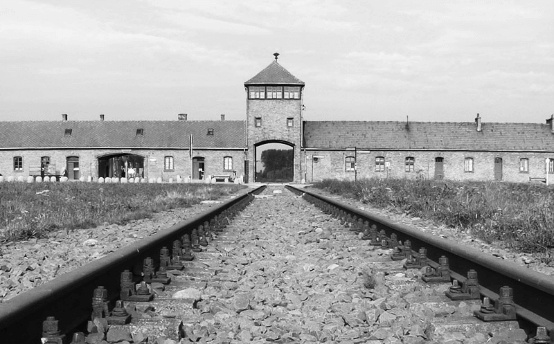
At the entrance gate to the Valley of Death, under a forged sign reading “Work sets you free”, each prisoner had a number was tattooed on their body. The name Auschwitz has become synonymous with the Holocaust, and will forever remain a symbol of evil and cruelty to humankind.
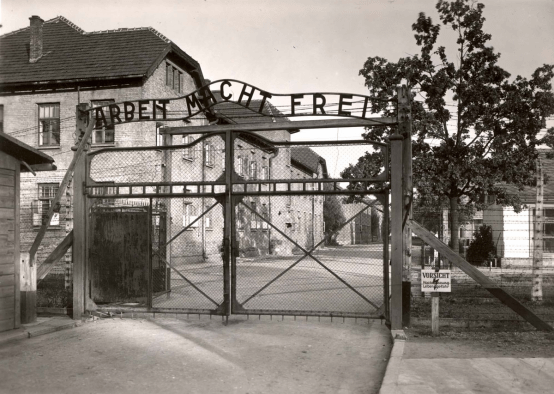
The camp was liberated by the Red Army on January 27, 1945. (Source: Yad Vashem)
Elite athletes were murdered in Auschwitz
Among the millions killed in Auschwitz were outstanding Jewish athletes in all sports, both at national and Olympic levels, who were unable to live to fulfil their dreams.
Amongst others, these athletes included:
- The national level footballers Julius Hirsch (Germany), Eddy Hamel (Ajax Holland), Arpad Weisz, and Franz Weiss (Hungary).
- The Olympic fencers Simon Hooker and Leon Van Mindler (the Netherlands).
- The boxers Victor Peretz (France-Tunis), World Flyweight Champion, and Leona Efrati (Italy).
- Gymnast Stella Blitz-Ahistriba (Netherlands), with the team gold medal at the 1928 Amsterdam Olympics, and the gymnasts Israel Vince Hank, Avraham Mock, Elias Malkman, and Jonas Slier (the Netherlands).
Chess players from various countries also were killed in Auschwitz, including three powerful chess masters of their time. These were chess players who, prior to the war, fought on the board in many international competitions, racking up many championships and achievements before being sent to Auschwitz and murdered in their early 50s: Wilhelm Auerbach, Leon Monosson and Leon Szwarcman.
All three participated together in many competitions in Europe, especially the Paris Championships, and also met their end in Auschwitz at quite similar ages.
This article tells the story of these three Jewish chess players, who did not live to do so themselves, or to continue with the love of their lives – the game of chess.
Wilhelm Auerbach (1894-1944)
Wilhelm Orbach, a German Jewish chess player, and one of Germany’s top chess players, won strong competitions in Germany and Europe, finishing at the top in many others. Champion of Frankfurt 1925, in 1928 he was ranked 41st in the world. He was murdered in 1944 in Auschwitz at the age of just 50 years old.
Orbach,W- Gromer, A
(Paris 1938)
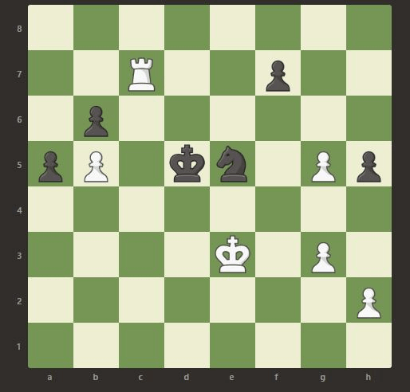
Leon Monosson (1892-1943)
Leon Monosson was a Belarusian-French Jewish chess player who successfully competed in strong competitions in Paris, St. Petersburg, and Europe, and was the Paris champion in 1935. He was killed on February 17, 1943 in Auschwitz, at just 51 years old.
Walter, M – Leon Monosson, L
Paris Championship (1935)
King’s Indian Defense
1.d4 Nf6 2.Nf3 e6 3.e3 c5 4.Nbd2 Nc6 5.c3 b6 6.Bd3 Bb7 7.O-O Be7 8.a3 d5 9.Ne5 Nxe5 10.dxe5 Nd7 11.f4 Qc7 12.Qg4 g6 13.c4 O-O-O 14.Qe2 g5 15.cxd5 exd5 16.Ba6 gxf4 17.exf4 Bxa6 18.Qxa6+ Qb7 19.Qd3 Rdg8 20.Nf3 Rg7 21.b3 Rhg8 22.Ra2 Qc6 23.Rc2 c4 24.bxc4 dxc4 25.Rxc4
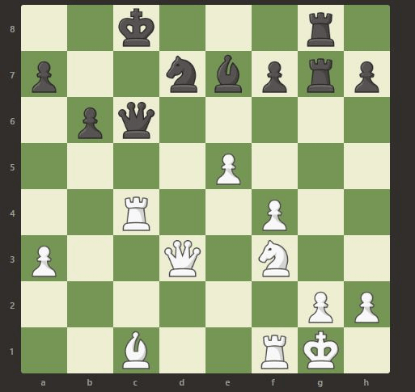
Leon Szwarcman (1887-1942)
Leon Szwarcman (Schwartzmann), a Polish-French Jewish chess player who successfully competed in strong competitions in Paris, Warsaw, St. Petersburg and Europe, was a 1926 Paris champion. He was murdered on September 3, 1942 in Auschwitz, aged just 55.
Leon Szwarcman– Mojzesz Hirszbajn
Warsaw, 1922
Ruy López
1 e4 e5 2 Nf3 Nc6 3 Bb5 a6 4 Ba4 Nf6 5 Qe2 Be7 6 c3 b5 7 Bc2 d6 8 d3 O-O 9 Nbd2 Bg4 10 h3 Bh5 11 g4 Bg6 12 Nf1 Re8 13 Ng3 d5 14 h4 h5 15 g5 Ng4 16 Nh2 dxe4 17 dxe4 Qd7 18 Nxg4 Qxg4 19 Qxg4 hxg4 20 h5 Bh7
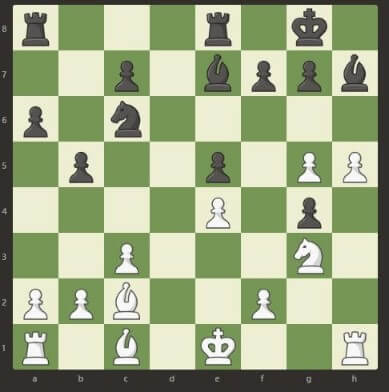
Leon Szwarcman – W. Dembo
Paris, 1927 , Alekhine’s Defence
1 e4 Nf6 2 e5 Nd5 3 Nc3 Nxc3 4 bxc3 d6 5 Bc4 d5 6 Be2 c5 7 f4 g6 8 Nf3 Nc6 9 O-O Bg7 10 d4 c4 11 Nh4 e6 12 Qe1 Bd7 13 Rb1 b6 14 Qg3 Rg8 15 Bf3 f5 16 exf6 Bxf6
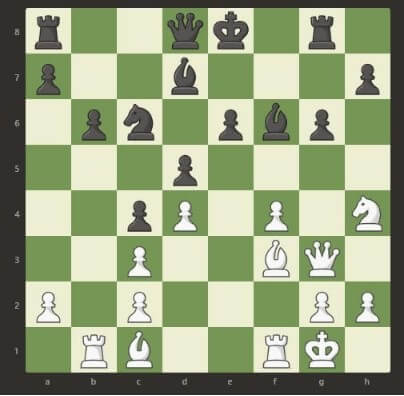
The unbelievable story – a chess piece carved from the beating stick of a Nazi commander in Auschwitz
Elhanan Eibschitz, a wood carver by profession who specialized in making miniatures, was deported from Lodz to the Auschwitz – Birkenau camp in the summer of 1944, and imprisoned in block number 20.
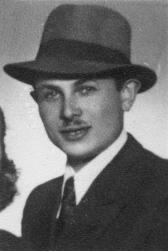
At the head of the block was a Nazi commander, a criminal, who regularly beat any prisoner who got in his way, using a beating stick.
The commander used to brag about his skills as a chess player, so, one day, in a courageous moment, Eibschitz offered to carve a chess piece for him from his stick (which was especially suitable for such a piece due to its thinness and roundness), hoping that this would improve the commander’s attitude towards the group of prisoners.
To Eibschitz’s surprise, the commander agreed, and even provided him with a small pocket knife to use for carving, as well as a direct threat: if he did not finish the job within four days and return the pocket knife, he would be executed.
In the following days, Eibschitz was allowed to stay in the block and not go out to work with the other prisoners. He began carving and was glad to have saved his fellow prisoners, for a time, from the terror of the beating stick. However, before he could complete the work, a group of prisoners were selected to be sent to the Goerlitz labour camp. Eibschitz was among those selected, and managed to hide the chess pieces, the pocket knife, and the rest of the stick, taking them with him.
Eibschitz described the completion of his carving with the following words: “I took them to the Goerlitz camp and finally finished the chess pieces. In the evening, when we returned from work and ate our meagre servings of soup, we relaxed next to the chess pieces and were fed and nourished by carefully watching the moves of the games.
We came up with suggestions and opinions on how to improve the quality of the moves in the game, and we really enjoyed watching them. Sometimes the head of block 7 (the one in charge of orders) also swept into the game, and we felt very sorry to have to turn off the lights and return to our sad reality, because we knew that soon we would have to get up again for forced labour.”
He concluded: “I was privileged to turn the stick of evil into a more pleasant stick, after breaking it and carving chess pieces from it. It gave the Jews a rare opportunity to forget and somewhat dim the intensity of the bitter reality.
The same momentary and temporary happiness that I had the privilege of giving to my fellow sufferers, gave me great pleasure in itself, and “it helped me come to my senses”.
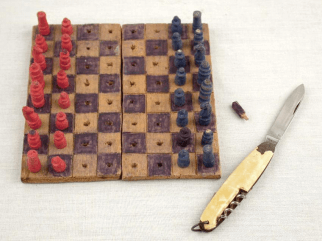
The late Elhanan Eibschitz (1916-2006), was liberated from the Goerlitz camp in May 1945 by the Red Army. His entire family was murdered in the Holocaust, and he immigrated to Israel in 1947, participating as a soldier in the War of Independence and settling in Kiryat Ata. Also in Israel, and as a Rabbi, Eibschitz authored the book “The Second Temple in its Glory” – the most extensive book written on the Second Temple.
Summary
The rising waves of anti-Semitism against Jewry across the world once again raise serious concerns. “Can we ever fully escape the shadow of Auschwitz, a Holocaust that will never be erased?”
It seems that the words of the late Prof. Eli Wiesel (1928-2016, journalist, author and philosopher, winner of the 1986 Nobel Peace Prize, for his activities for human rights), may be more relevant than ever. A survivor from Auschwitz himself, Wiesel was imprisoned as a 16-year-old with his family (some of whom were murdered), and survived the camp inmate’s death march in 1945. He famously commented:
“Unfortunately, anti-Semitism will not end. It will continue to exist, because in some countries there is no shame in being anti-Semitic. It must be remembered that anti-Semitism caused Auschwitz, without anti-Semitism Auschwitz would not exist.”
Wiesel’s speech “The Danger of Indifference” delivered at the White House in 1999 at the invitation of President Bill Clinton, summarised the second millennium up to the beginning of the 21st century, and is considered one of the most important speeches to date on the history of the 20th century.
In his speech, Wiesel emphasised the serious consequences of indifference, and how it encourages anti-Semitism: “Indifference does not provoke a reaction, indifference is not a reaction, indifference is not a beginning. It is an end!”
Wiesel emphasised: “The Holocaust is the ultimate mysterious event. Only those who were there know what it was. Others will never know… The memory of the Holocaust is the only chance to save the world from another holocaust!”
Sources:
Gutman Israel and Berenbaum Michael, Anatomy of the Auschwitz Death Camp, Yad Vashem Publishing 2003.
Rosalind Hortonand and Sally Simmons, Speeches that changed the world – Elie Wiesel’s “Speech of Indifference” at the White House April 12, 1999, published by Meter 2008.
Wiesel Eli, The Night and Two Other Stories The Dawn, Today, Yedioth Books 2003.
Levi Primo and Benedetti Leonardo, Auschwitz Report, Dvir Publishing 2017.
Kandelshine Shlomo, Chess in the Shadow of the Holocaust, Daat – Journal of Education and Teaching, Issue No. 17, 2020/2021, Herzog Academic College.
Yad Vashem Museum, Jerusalem
Website: Chessgames.com
